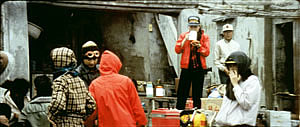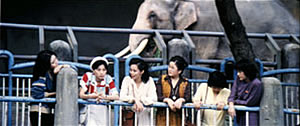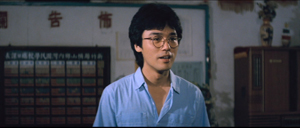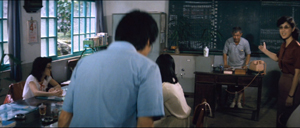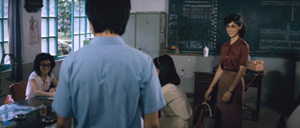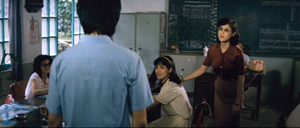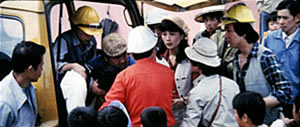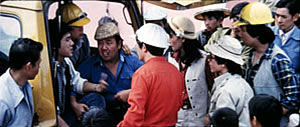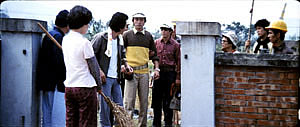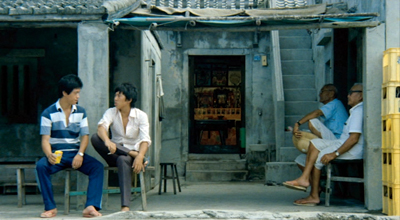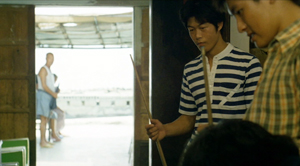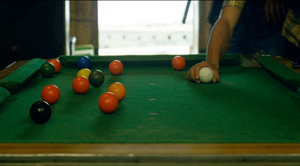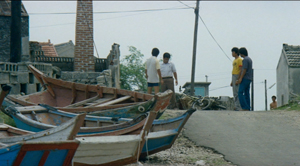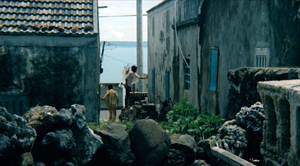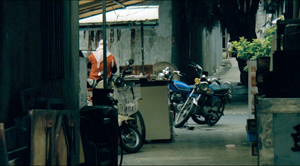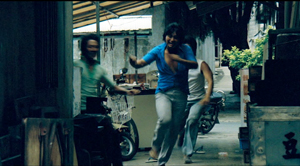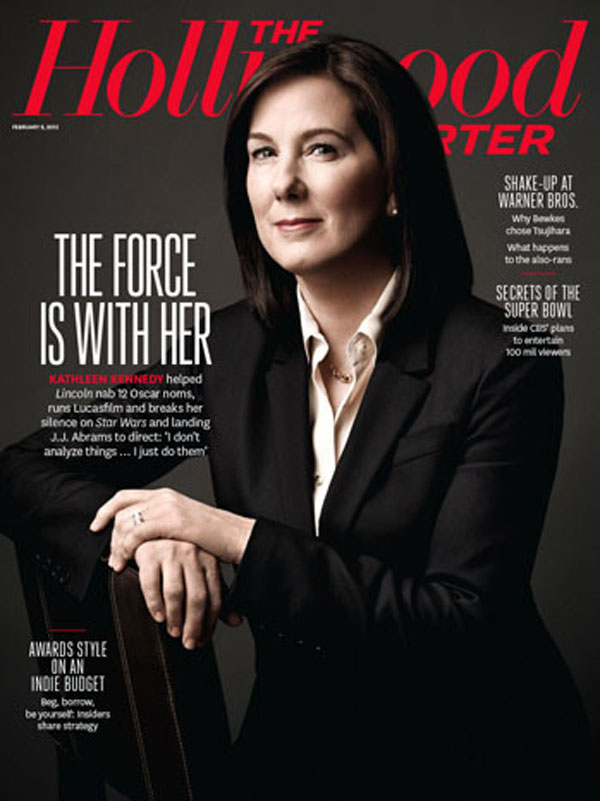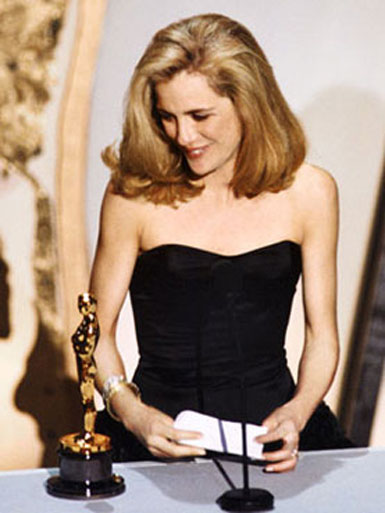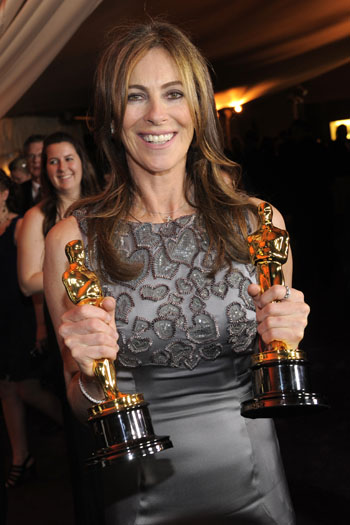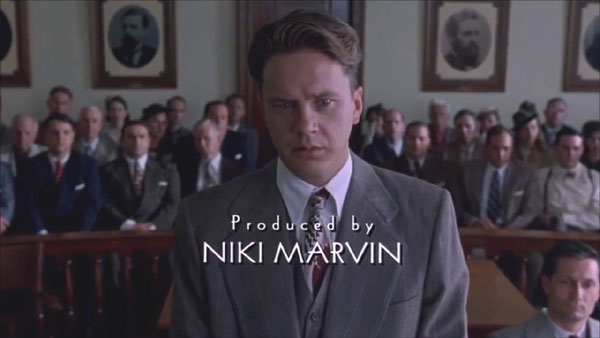Gone but far from forgotten
Sunday | March 3, 2024Kristin here:
The speed with which the news of David’s death, early on the morning of February 29, 2024, spread has amazed me. I expected many responses: condolences, tributes, and most of all stories of how he had affected people’s lives. I didn’t expect the tidal wave of messages and posts and emails that followed. The authors range from his students and colleagues to casual acquaintances met at film festivals to filmmakers whose work was influenced by his writings. His legacy will clearly be vast and lasting, which to me provides the best consolation for his loss.
David was ill for two and a half years, starting with a cancer diagnosis in June, 2021. Treatment got rid of the cancer, but his chronic degenerative lung disease very slowly progressed. He went into hospice treatment at home last September. Hospice is supposed to last for six months, with an option to renew for another six. He lived almost exactly six months. Though growing weaker toward the end, he remained lucid. We watched a movie together every evening. In the last few days he did not feel up to a complex feature film, so on the night before he died, we rewatched two episodes of The West Wing. His fingers have grown stiff in recent months, but he managed to post a blog entry three days before his death. It was a re-post of an old entry on Hou Hsiao-hsien, with a short new introduction. It was relevant, because the Criterion Collection is streaming some of Hou’s early films, which David loved.
He wanted to die at home rather than spending his last days at a hospice facility, and he did. I was with him. It was brief, and I don’t think he suffered. It happened within a few months of the fiftieth anniversary of when we moved in together in the summer of 1974. He was as wonderful a spouse as he was a scholar and a friend.
His writings live on, of course. Some of them are available free online, linked on the left margin of his website’s main page. He leaves behind video analyses and lectures, too. Some are part of our series “Observations on Film Art” on The Criterion Channel. Others are supplements on Criterion video releases. Less well-known are the five full-length lectures he recorded and posted on Vimeo. Their topics give a sense of his breadth of interests.
What will happen to the blog? Recently we decided that re-posting older entries that seemed relevant to something happening at the time seemed a good plan. With over 1100 entries since our launch in 2006, there are plenty that few know about. I probably won’t blog as often as I used to, but no doubt inspiration will hit once in a while. I promise not to give up the year-end, inexplicably popular lists of the ten best films of ninety years ago. I suspect that 1934 will yield an impressive crop of titles.
This obituary, written by David’s colleagues and valued friends, was first posted on the website of the Department of Communication Arts the the University of Wisconsin-Madison on March 1.
David Bordwell, the Jacques Ledoux Professor Emeritus of Film Studies at the University of Wisconsin-Madison, died on February 29, 2024, at the age of 76 after a lengthy illness. A prolific researcher, dedicated teacher, and passionate cinephile, he guided countless colleagues, students, and film lovers to heightened awareness of the medium’s artistic possibilities. “One thing that I loved and greatly admired about Bordwell was how – with passion, analytic precision and boundless enthusiasm for the medium – he carved out an inviting, sui generis intellectual space that could be enjoyed by scholars and general readers alike,” wrote New York Times film critic Manohla Dargis upon learning of his passing. “He was a paragon of scholarly achievement, yes and of course, but he was also a lot of fun to read – which isn’t something you can say of most academics.”
Bordwell joined the faculty of UW-Madison’s Department of Communication Arts in 1973 immediately after completing his graduate coursework at the University of Iowa (PhD, 1974). He remained at Wisconsin throughout his illustrious career, retiring in 2004, and he continued contributing to the Department’s mission after retirement through emeritus teaching and other activities. He also held visiting faculty appointments at New York University (1979) and the University of Iowa (1980), and in spring 2017 he held the Kluge Chair in Modern Culture at the Library of Congress.
When Bordwell launched his career in the 1970s, film studies was just entering academia, and over the course of three decades at the UW-Madison, as well as a remarkably productive post-retirement, he helped the still-young discipline achieve new levels of respectability and intellectual rigor. Indeed, his scholarly productivity reset the bar for the discipline of film studies. He authored, coauthored, or edited some 22 books and monographs. These included two foundational film studies textbooks written with his spouse and intellectual partner, Dr. Kristin Thompson (Ph.D. UW-Madison, 1977), a multi-talented scholar who has made major contributions to film studies, literary studies, and Egyptology. Bordwell also authored more than 140 journal articles, book chapters, introductions to collections, and review essays.
Later in his career he produced equally valuable material for wider audiences including a lively, wide-ranging blog Observations on Film Art, also in partnership with Thompson, as well as video essays and informative DVD commentaries for The Criterion Collection. And he made himself available at numerous film festivals and public movie screenings as a commentator, sharing his knowledge and enthusiasm with fellow movie lovers. In fact, Bordwell remained a productive scholar until the very end of his life, just a year ago publishing Perplexing Plots: Popular Storytelling and the Poetics of Murder. This exhaustively researched and elegantly written book has been nominated for an Agatha Award and for the Edgar Award, given by the Mystery Writers of America, in the Best Critical/Biographical category.
An inspiring teacher, Bordwell’s classroom skills were acknowledged with the UW-Madison’s Chancellor’s Teaching Award (1984) and a Phi Beta Kappa Teaching Award (2004). He was known for his energized lectures and for his lively, probing graduate seminars. His pedagogical strategy was not so much to impart knowledge as to draw it out from students, yielding fresh insights on whatever film, director, or theoretical issue was on the agenda for that day. Professor Maria Belodubrovskaya (University of Chicago) speaks for generations of former Bordwell students in recalling the sense of participation available to all members of a Bordwell class. “What struck me about David’s teaching was that in the classroom he did not behave as a big-time scholar but as more of a leader,” she recalled. “Everyone was treated as no less curious and observant than the instructor himself.”
Bordwell also provided a professional model that benefitted many of the Communication Arts graduate students who eventually entered higher education. UW-Madison Professor Emeritus Vance Kepley’s memory of his very first experience in a Bordwell graduate course is indicative: “It was something of an epiphany. By the end of the first class, I thought, ‘This is exactly how film studies should be taught. It’s what I want to do, and I want to do it just as well.’ Of course, I never came close to duplicating David’s casual brilliance, but years of trying made me a better teacher.”
The impact of Bordwell’s graduate mentoring can be suggested by both the quantity and quality of the doctoral dissertations he supervised. At UW-Madison, he directed 33 dissertations, each of which helped launch a productive career, and 17 dissertations were published as career-enhancing monographs. Bordwell’s dissertators could count on him to provide exacting but encouraging guidance through the always-arduous process of bringing forth a polished manuscript. “David pounced on every chapter as soon as I submitted it for review,” remembers Professor Richard Neupert (University of Georgia). “Within days he returned the manuscript covered with detailed and often witty commentary, along with a thoughtful, typed summary with warnings, suggestions, and praise. More than a great mentor, he was a fellow traveler.”
Bordwell’s research program consisted of three principal strands. The first is composed of stylistic analyses of individual films or directors, most notably The Films of Carl-Theodor Dreyer (1980), the monumental Ozu and the Poetics of Cinema (1988), The Cinema of Eisenstein (1993), and detailed essays on Louis Feuillade, Kenji Mizoguchi, Theodoros Angelopoulos and Hou Hsiao-Hsien grouped in the volume Figures Traced in Light: On Cinematic Staging (2005). The introductory college textbook Film Art: An Introduction, written with Thompson, also contributes to this strand. First published in 1979, it is now in its thirteenth edition and will continue under the authorship of Professor Jeff Smith (UW-Madison). It has been translated into ten other languages, with additional translations forthcoming.
The analysis of national film styles and modes of film production constitutes the second strand of Bordwell’s research. These studies incorporate primary-level documentary research on the structure of film industries, film technology, and the conditions of production. The most important work in this category is The Classical Hollywood Cinema: Film Style and Mode of Production to 1960 (1985), written with Thompson and Janet Staiger (William P. Hobby Centennial Professor Emerita, University of Texas at Austin). A massive research undertaking, it incorporates stylistic analyses of a random sample of one hundred films, interviews with veteran cinematographers and other craft workers, and careful reading of film industry trade papers and industry technical reports. It seeks to define the group style of classical Hollywood in terms of a range of stylistic options which were delimited by the state of filmmaking technology at any given point, as well as by the craft practices and conventions internalized by filmmakers. The methodology was later used in another widely successful textbook, Film History: An Introduction, also coauthored with Thompson and designed to introduce students to a broad spectrum of national cinemas. The sole-authored Planet Hong Kong: Popular Cinema and the Art of Entertainment (2000) examined a small but hugely successful film industry from the 1970s through the 1990s, focusing on stylistic norms and narrative strategies that distinguished Hong Kong cinema from Hollywood.
The third strand of Bordwell’s research involved theorizing the role of the film spectator in the movie-viewing experience. Bordwell’s ground-breaking Narration in the Fiction Film (1985) proposed the idea that viewers integrated perceptual information with higher order cognition to construct the film’s story. For Bordwell, spectators were active makers of meaning who drew on their understanding of cinematic conventions, their knowledge of different types of stories, and their real-life experience to comprehend the various visual and audio cues given to them by the film. With this and several subsequent publications, Bordwell helped encourage a robust line of scholarship in cognitive film studies, an approach that brought together analytic philosophers and psychologists in developing a model of spectatorship that amalgamates aspects of art, culture, and even biology.
Bordwell’s many professional honors attest to the respect he earned in the international scholarly community. He was awarded honorary doctorates from the University of Copenhagen (1997) and from Lingnan University in Hong Kong (2023). Other major international awards include a University of Auckland Hood Fellowship (New Zealand), an Anthology Film Archives Award (United States), an Excellence in Asian Film Scholarship Award (Asian Film Society, Hong Kong), and the aforementioned Kluge Chair. At UW-Madison, Bordwell was selected for a prestigious Wisconsin Alumni Research Foundation Professorship (1990) and for a Hilldale Distinguished Professorship (2001), as well as a Hilldale Award in the Humanities (2001) and a senior fellowship at the Institute for Research in the Humanities (1993-98).
Bordwell’s love of cinema emerged when he was a child, living on a remote farm in upstate New York, far from any movie theater. In his rare moments away from school and chores, he nourished his cinephilia by watching films on TV and reading books about film starting at the age of 12. Bordwell made his way to the State University of New York at Albany, where he studied English literature. He then did his graduate studies in Speech and Dramatic Arts, with a concentration in Film at the University of Iowa.
Notice of his passing prompted glowing tributes for Bordwell from prominent filmmakers and intellectuals outside the academy who valued his myriad contributions to world film culture.
David Koepp, critically acclaimed screenwriter and director (Jurassic Park, Mission Impossible, Premium Rush)
“David’s genius for analyzing Hollywood narrative was an inspiration and a goal for me in my own work, and it reflected in the work of anyone who read him. He had a boundless generosity toward the medium and found value in everything he saw, at all levels of artistic accomplishment.”
Damien Chazelle, Oscar-winning writer and director (La La Land):
“I learned more about film from reading David Bordwell than from any other writer. To me he was America’s André Bazin, a thinker and historian who massively expanded the field and found a way to marry theory and criticism in a wholly new way. Narration in the Fiction Film changed how I think about storytelling in film. Figures Traced in Light changed how I think about framing. The Way Hollywood Tells It changed how I think about Hollywood. He was a giant, and multiple generations of filmmakers, critics and theorists (for ultimately we are all in this together) owe him a huge debt.”
Kim Hendrickson, Executive Producer, Criterion:
“David and I spent many hours together recording his analyses for the fifty episode Observations on Film Art series we created for the Criterion Channel. He was a champion for movies not because he was superb at analyzing form – he was the best – but because movies were his life force. I, and so many colleagues at Janus and Criterion, are indebted to him for his brilliance, generosity, and friendship.”
James Schamus, award-winning screenwriter, producer, director, and professor (Crouching Tiger, Hidden Dragon; Brokeback Mountain):
“As a filmmaker, I can describe David’s friendship as unnervingly generous. His astonishing critical intelligence never got in the way of his enthusiasms, and his enthusiasms never dampened his analytic regard; they were functions of each other. This meant that when talk came around to one’s own work, the effect was something akin to getting a loving bear hug from a nuclear-powered microscope. There will never be another like David again.”
To an international community of filmmakers, film students, and cinephiles, David Bordwell was the most respected film scholar of his generation. But to his very wide and ever-widening circle of friends, he also was a warm, witty, unaffected companion. To the thousands of students, colleagues, and movie-lovers who sought his counsel outside of the classroom, he was generous with his time and knowledge, and in social gatherings he graciously cultivated new friendships with individuals he was meeting for the first time while also reconfirming his appreciation for friends of long-standing. He could tailor his one-on-one conversations to whatever topics were of interest to the other party, and one usually came away from such chats with the feeling that, besides being a keen conversationalist, he was also a wonderfully attentive and appreciative listener. All who knew David Bordwell personally will miss his kindness, goodwill, and boundless congeniality, as well as his professional wisdom.
Survivors include his wife, Kristin Thompson; his sisters, Diane Bordwell Verma and Darlene Bordwell; his nephew, Sanjeev Verma, and his niece, Kamini Verma.












